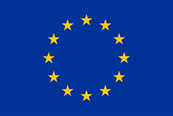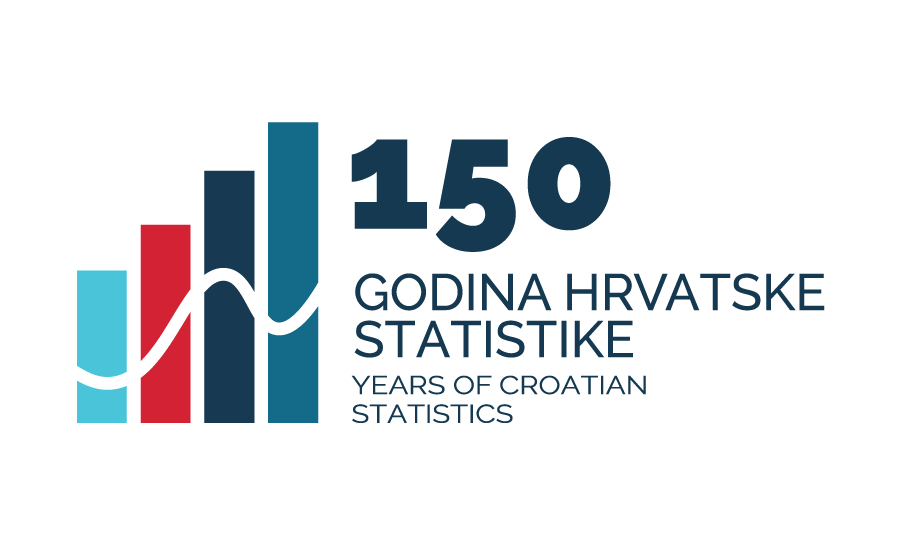First Release
USAGE OF INFORMATION AND COMMUNICATION TECHNOLOGIES (ICT) IN HOUSEHOLDS AND BY INDIVIDUALS, 2022
Tendencies
- The share of households equipped with a personal computer and broadband internet access is at the level of the previous year.
- Computer and internet usage is at the level of the previous year in all age groups.
- Usage of online e-government services increased by 11% compared to 2021.
- Commerce via the internet is at the level of the previous year; 44% of internet users purchased goods or services via the internet.
G-1 HOUSEHOLDS EQUIPPED WITH ICT, 2022
G-2 TYPES OF INTERNET ACCESS IN HOUSEHOLDS, 2022
The survey results showed that the share of households equipped with ICT in the Republic of Croatia is at the level of the previous year. There were no significant changes compared to the previous year.
G-3 COMPUTER USERS, BY AGE GROUP AND SEX, 2022
COMPUTER USERS BY EMPLOYMENT STATUS, 2022
The distribution of computer users among age groups did not change significantly compared to the previous year, although the number of users increased by 3%. The youngest population still maintained the lead in computer usage and the number of users was decreasing proportionally with age. A similar trend was noticed in the employment status structure, where pupils and students, as the youngest group, were the most frequent computer users.
G-4 INTERNET USERS, BY AGE GROUP AND SEX, 2022
INTERNET USERS, BY EMPLOYMENT STATUS, 2022
An increase was noticed in almost all age groups of internet users compared to the previous year. The highest increase was recorded in the 65 – 74 age group, i.e. 4% compared to the previous year. As expected, the youngest population still maintained the lead in internet usage and the number of users was decreasing proportionally with age. A similar trend was noticed in the employment status structure, where pupils and students, as the youngest group, were the most frequent internet users.
G-5 PURPOSE OF INTERNET USAGE BY INDIVIDUALS, 2022
The comparison of the results with data from the previous year showed that habits have not changed much. Individuals mostly used the internet for sending messages (93%), obtaining information on goods and services (93%), reading daily news and magazines (87%), using e-mail (83%), watching videos (79%), telephone and video calls (77%) and participating in social networks (73%).
G-6 INTERNET PURCHASES BY INDIVIDUALS, 2022
The survey results showed that commerce via the internet has not increased. There were 44% of internet users who purchased goods and services via the internet, which is the same compared to the previous year. Buyers' habits show that the most often bought items were clothes and shoes, tickets for events, telecommunication services, cosmetics, films, music, consumer electronics and household appliances.
G-7 USAGE OF INTERNET-OF-THINGS (IoT) SYSTEMS, 2022
For the first time, we investigated the use of the Internet-of-Things (IoT) systems in households. A very small number of respondents stated that they used some of the Internet-of-Things systems in their homes. In all the mentioned categories, less than 10% of respondents used one of the systems.
G-8 REASONS FOR NOT USING INTERNET-OF-THINGS (IoT) SYSTEMS, 2022
We also examined the reasons why the Internet-of-Things (IoT) systems were not used. The largest number of respondents declared that there was no need for such systems (49%). An equal number of respondents declared that they did not use the systems because they are concerned about the privacy and protection of data on the devices and the security of the system due to the potential danger of hacking. Furthermore, 34% of respondents declared that the high price of devices was an obstacle to their use, while 18% of respondents did not know that the Internet-of-Things systems even existed.
NOTES ON METHODOLOGY
The purpose of the statistical survey
Data shown in this First Release are estimates obtained through the IKT-DOM Survey. This is an annual survey on the usage of information and communication technologies (ICT) in households and by individuals. It provides information on computer and information literacy of the Croatian population. This survey measures the usage of computers and other information and communication technologies as well as the number of persons in the Republic of Croatia who use the internet and for what purposes. The data are an important source for conducting policies in the field of information society in the Republic of Croatia as well as in the European Union.
Legal framework
The IKT-DOM Survey was conducted in 2022 according to Eurostat guidelines and on the basis of the Official Statistics Act (NN, No. 25/20). The same surveys were conducted in all EU Member States and, therefore, data are internationally comparable. The international data are available on the following web site address: https://ec.europa.eu/eurostat/statistics-explained/index.php/Digital_economy_and_society.
Concepts and definitions used in the Survey are in line with the EU Methodology for Statistics on the Information Society, 2022, especially with Regulation (EC) No. 2019/1700 of the European Parliament and of the Council concerning social Community statistics.
Observation units
The observation units are persons aged 16 to 74 and their households. Selected persons answer the questionnaire. In case of their absence, another household member can answer instead, but on behalf of the selected person.
Reference period
All questions in the survey refer to the period of three months prior to the beginning of the survey.
Sampling frame and size
The basis for the sampling frame is the 2011 Census of Population, Households and Dwellings of the Republic of Croatia and phone directories of phone companies. The sample size was 5 497 persons aged 16 to 74 at the time of data collection.
Data collection method
The data were collected by computer-assisted telephone interviewing (CATI) and via the internet by using the online questionnaire (CAWI).
Response rate
Out of the total sample size (5 497 units), 5 475 units were eligible and 3 381 persons took part in the survey. It means that the response rate was 62% and the eligibility rate was 99%. The non-response rate was 38%.
Weighting
Weighting calculates an unbiased estimate and achieves representativeness of the sample for the whole population. The survey data refer to persons and households and therefore two weights were calculated:
– the weight for individuals and
– the household weight.
The RIM weighting procedure (iterative proportional fitting – IPF) was used for the grossing-up of individuals. Variables used for the grossing-up were the following: county, settlement size, sex, age and educational attainment level.
The RIM weighting procedure was used for the grossing-up of households as well. The extrapolation weight was calculated for each household that participated in the survey and the calculation method included the county, settlement size and the level of urbanization.
The calculated weight for individuals was extended to the whole population of persons aged 16 to 74. On 31 December 2021, there were 3 098 321 people aged 16 to 74 in the Republic of Croatia.
The calculated household weight was extended to the whole population of households, that is, to households with at least one person aged 16 to 74. On 31 December 2021, there were 1 287 641 households with at least one person aged 16 to 74.
Definitions and explanations
Broadband are technologies or connections that enable rapid transmission of data, especially films, games, video-conferences over an internet network (e.g. ADSL, cable connection, UMTS, optical connection, VDSL, leased lines).
E-commerce means buying or ordering goods and services over the internet. Typed e-mails are not considered e-commerce.
ICT (Information and Communication Technology) are software and hardware used for data communication (e.g. computer, fax, the internet, fixed mobile phone).
Internet is a worldwide network of computers, communicating on the basis of standard internet protocols that enable users to exchange textual and audio-visual information.
UMTS (Universal Mobile Telecommunications System) is also known as 3G technology which was designed as a successor to GSM. It enables users to transmit images, video, high volume of data through a wireless connection and access the internet.
Internet-of-Things (IoT) implies a system of interconnected computer devices, mechanical and digital machines, and objects that can communicate and transmit data via a network without the need for human access and human interaction. Objects in such a system can be set up via the internet, programmed to perform tasks, and can also exchange data with each other.
Education is divided as follows:
- basic education; includes persons without schooling or with incomplete primary education and persons who have only finished primary school
- secondary education; includes persons with upper secondary general or vocational education
- tertiary education; includes persons with higher non-academic education, persons with professionally-oriented higher education, faculty education and persons with post-graduate education.
Abbreviations
| ADSL | Asymmetric Digital Subscriber Line |
| EC | European Community |
| EU | European Union |
| Eurostat | Statistical Office of the European Union |
| NN | Narodne novine, official gazette of the Republic of Croatia |
| GSM | Global System for Mobile Communications |
| USB | Universal Serial Bus |
| VDSL | Very-High-Bit-Rate Digital Subscriber Line |

The survey whose data is published in this release has been conducted with the financial assistance of the European Union. The contents of this document are the sole responsibility of the Croatian Bureau of Statistics and can under no circumstances be regarded as reflecting the position of the European Union.
Published by the Croatian Bureau of Statistics, Zagreb, Ilica 3, P. O. B. 80
Phone: (+385 1) 48 06 111
Press corner: press@dzs.hr
Persons responsible:
Dubravka Rogić-Hadžalić, Director of Demographic and Social Statistics Directorate
Lidija Brković, Director General
Prepared by:
Hrvoje Markuš
USERS ARE KINDLY REQUESTED TO STATE THE SOURCE.
Customer Relations and Data Protection Department
Information and user requests
Phone: (+385 1) 48 06 138, 48 06 154
E-mail: stat.info@dzs.hr
Subscription
Phone: (+385 1) 48 06 115
E-mail: prodaja@dzs.hr


